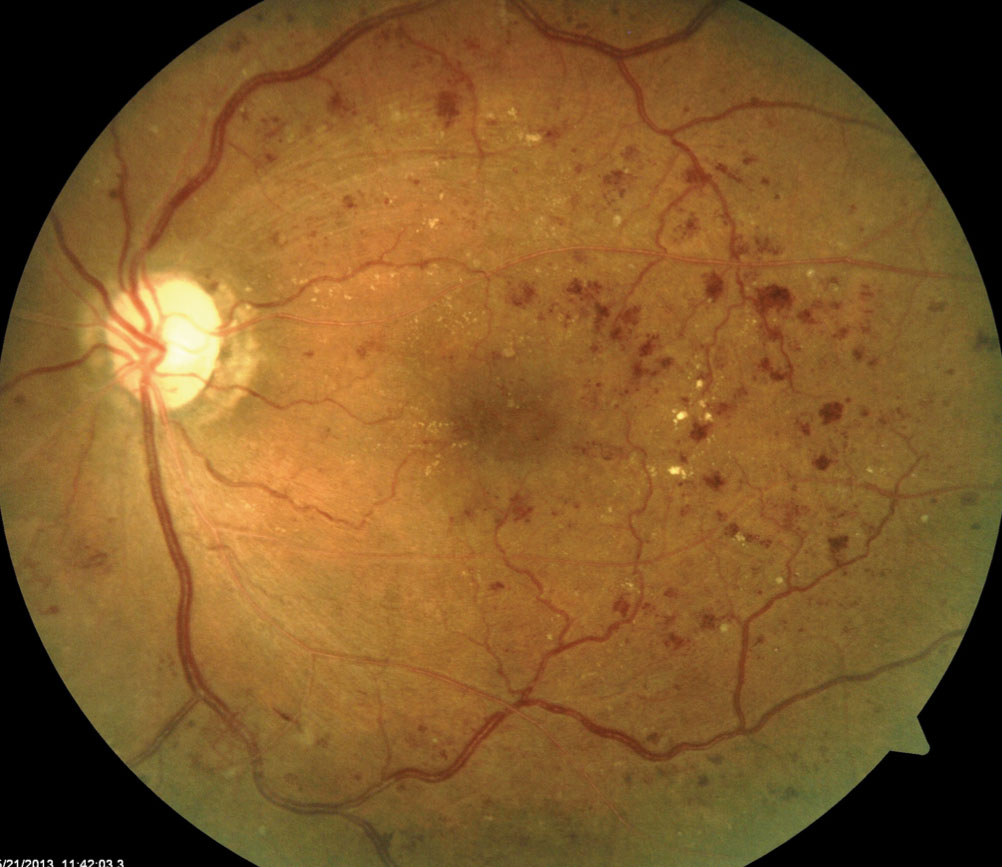 |
| Untreated NPDR will progress rapidly without intervention, study shows. Photo: Mohammad Rafieetary, OD. Click image to enlarge. |
Anti-VEGF therapy is a well-established treatment for diabetic retinopathy (DR) and diabetic macular edema (DME), but questions still remain about the ideal disease stage in which to initiate treatment, optimal treatment intervals and the value of anti-VEGF before progression to proliferative disease. A recent post-hoc analysis of the RISE and RIDE trials comparing the safety and efficacy of monthly intravitreal ranibizumab vs. sham over two years in 759 patients with DR and vision loss due to DME characterized the course of DR progression in the absence of anti-VEGF therapy to shed some light on these questions.
The post-hoc analysis of the two phase three trials revealed that untreated patients with moderately severe and severe nonproliferative DR (NPDR) are at risk for rapid progression and vision loss. The researchers reported that at 24 months, 28.8% of untreated fellow eyes with baseline moderately severe and severe NPDR experienced at least a two-step change in DR progression. This same degree of progression was seen in 10.3% of eyes without NPDR and with moderate NPDR and in none of the eyes with mild- to high-risk proliferative DR (PDR).
The researchers also reported that 18.9% of untreated fellow eyes with moderately severe or severe NPDR achieved at least a two-step improvement in DR, while this same degree of improvement occurred in 88.4% of ranibizumab-treated eyes.
Anti-VEGF therapy may improve disease severity and delay proliferative disease onset, the researchers concluded. “Eyes with moderately severe and severe NPDR at baseline were most vulnerable to DR progression in the absence of therapy, suggesting that targeted treatment may be an effective strategy to delay progression to PDR and avoid severe vision loss.”
Bakri SJ, Malhotra M, Stoilov I, et al. Course of diabetic retinopathy in untreated fellow eyes in RIDE and RISE: a post hoc analysis. Ophthalmic Surg Lasers Imaging Retina. 2022;53(4):202-7. |

